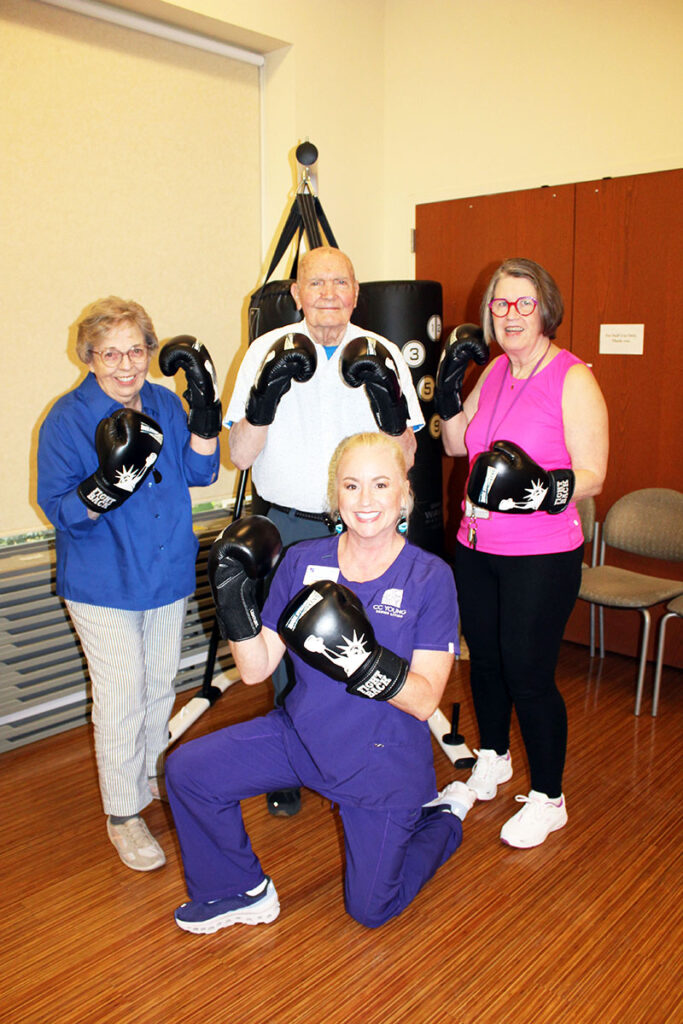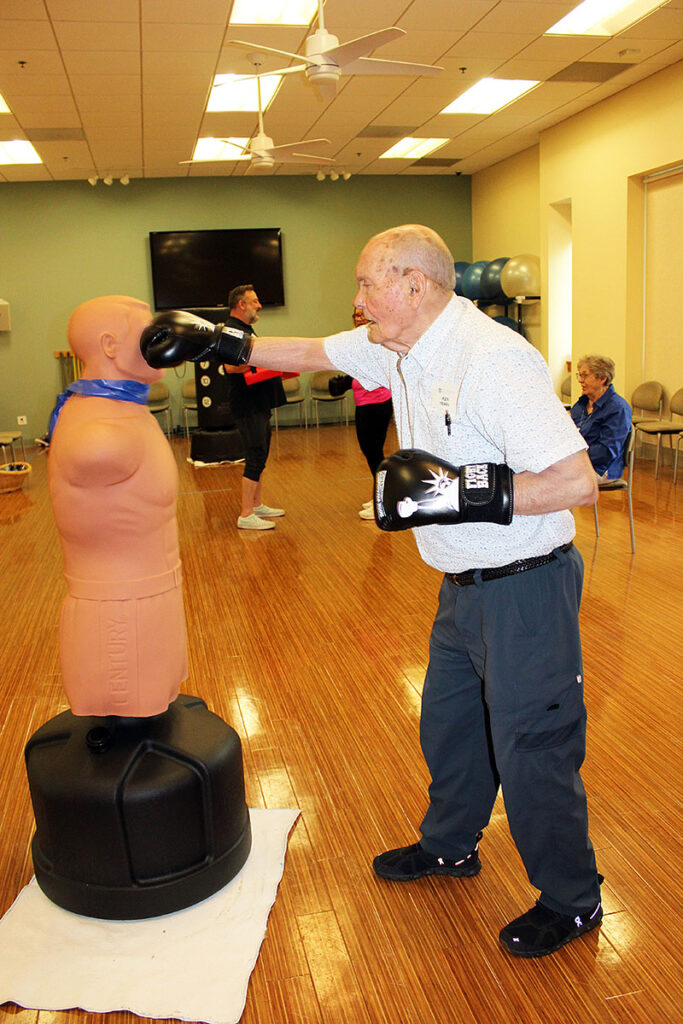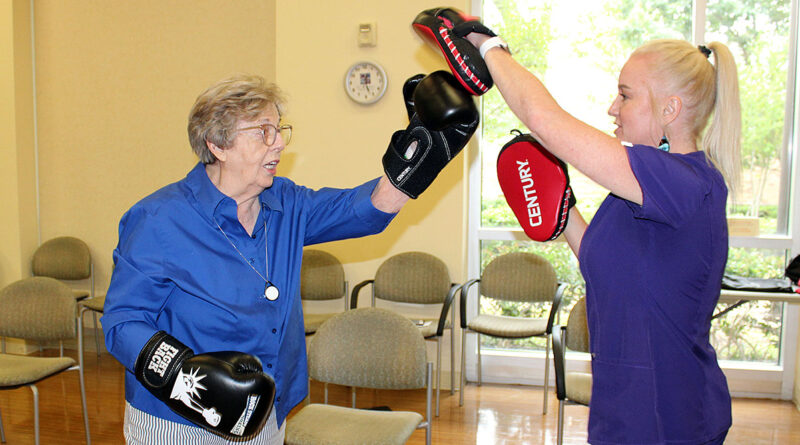Punching Out Parkinson’s Disease Symptoms
Boxing helps patients improve posture, balance, abate tremors
By: Karen Chaney
When CC Young Senior Living residents strap on their boxing gloves, they do so to stave off symptoms brought on by Parkinson’s disease and movement disorders.
Symptoms of Parkinson’s and other movement disorders include stooping, Jennifer Broadway, a certified Rock Steady Boxing coach, said. “Boxing requires people to have upright posture when they’re hitting a speed bag, and it helps with that part.”
Broadway started working at CC Young in 2018 as a hospice administrator. After undergoing online and in-person training with Rock Steady Boxing, she held her first class in January. She found 15 years of experience with martial arts and being a registered nurse beneficial in this new undertaking.
“One of my passions is boxing,” she said. “And I have a personal history of Parkinson’s in my family.”
Rock Steady Boxing, an Indianapolis nonprofit, was founded in 2006.
“The mission of Rock Steady Boxing is to equip our affiliates and empower the coaches to improve the quality of life of people with Parkinson’s disease through a non-contact, boxing-based fitness curriculum,” according to rocksteadyboxing.org.
Boxers start the hour-long class with a head-to-toe warm-up: stretches, squats, pushups, and calf raises.


“Then, we gear up and put on our boxing gloves,” Broadway said. “We do punches, kicks, blocks, and we throw elbows.”
Non-contact boxing also helps improve balance, abate tremors, lessen foot shuffling, and strengthen voices.
“Punching is good for tremors. Putting on the gloves and grasping their hands into fists helps with that also,” Broadway said. “Getting into a boxing stance … makes them more sturdy on their feet, which helps their gait and balance.”
There are also social perks associated with this class.
“Living with Parkinson’s can be very isolating, especially at mealtime if someone has tremors; eating soup or different foods can be embarrassing,” Broadway said. “You see some withdrawal from some social activities as Parkinson’s progresses. This class gives them social interaction with people with similar situations and symptoms.”
Broadway said she feels successful as a coach when everyone participates and feels better at the end of the day.
“At the beginning of the year, a lady who was very active before Parkinson’s started taking classes,” Broadway said. “I had to help her transfer from her wheelchair to a chair, and now, she’s up and walking very well.”





